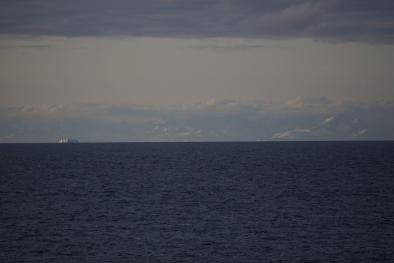Anomalously weak Labrador Sea convection and Atlantic overturning during the past 150 years
Study key findings & significance
- The Atlantic meridional overturning circulation (AMOC) is 15% weaker than around 400AD, and human-caused global warming is responsible for at least a significant part of the weakening.
- Palaeo-oceanographic evidence shows that deep convection of surface waters in the North Atlantic — the engine that keeps the AMOC in constant motion — began to decline as early as around 1850, probably owing to increased freshwater influx from Arctic ice that had melted at the end of a relatively cold period called the Little Ice Age.
Author quotes
The AMOC is a really important part of the Earth’s climate system and it has played an important part in abrupt climate change in the past.
David Thornalley, study lead author, University College London
Abstract
The Atlantic meridional overturning circulation (AMOC) is a system of ocean currents that has an essential role in Earth’s climate, redistributing heat and influencing the carbon cycle. The AMOC has been shown to be weakening in recent years1; this decline may reflect decadal-scale variability in convection in the Labrador Sea, but short observational datasets preclude a longer-term perspective on the modern state and variability of Labrador Sea convection and the AMOC1. Here we provide several lines of palaeo-oceanographic evidence that Labrador Sea deep convection and the AMOC have been anomalously weak over the past 150 years or so (since the end of the Little Ice Age, LIA, approximately AD 1850) compared with the preceding 1,500 years. Our palaeoclimate reconstructions indicate that the transition occurred either as a predominantly abrupt shift towards the end of the LIA, or as a more gradual, continued decline over the past 150 years; this ambiguity probably arises from non-AMOC influences on the various proxies or from the different sensitivities of these proxies to individual components of the AMOC. We suggest that enhanced freshwater fluxes from the Arctic and Nordic seas towards the end of the LIA—sourced from melting glaciers and thickened sea ice that developed earlier in the LIA—weakened Labrador Sea convection and the AMOC. The lack of a subsequent recovery may have resulted from hysteresis or from twentieth-century melting of the Greenland Ice Sheet. Our results suggest that recent decadal variability in Labrador Sea convection and the AMOC has occurred during an atypical, weak background state. Future work should aim to constrain the roles of internal climate variability and early anthropogenic forcing in the AMOC weakening described here.
Related Content



